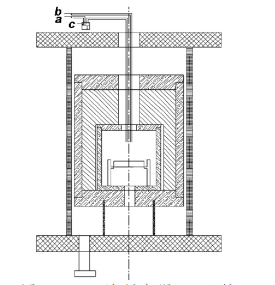
- English
- Español
- Português
- русский
- Français
- 日本語
- Deutsch
- tiếng Việt
- Italiano
- Nederlands
- ภาษาไทย
- Polski
- 한국어
- Svenska
- magyar
- Malay
- বাংলা ভাষার
- Dansk
- Suomi
- हिन्दी
- Pilipino
- Türkçe
- Gaeilge
- العربية
- Indonesia
- Norsk
- تمل
- český
- ελληνικά
- український
- Javanese
- فارسی
- தமிழ்
- తెలుగు
- नेपाली
- Burmese
- български
- ລາວ
- Latine
- Қазақша
- Euskal
- Azərbaycan
- Slovenský jazyk
- Македонски
- Lietuvos
- Eesti Keel
- Română
- Slovenski
- मराठी
- Srpski језик
TaC coating with CVD method
2023-10-24
Tantalum carbide coating is an important high-strength, corrosion-resistant and chemically stable high-temperature structural material with a melting point of up to 4273 °C, one of the several compounds with the highest temperature resistance. It has excellent high-temperature mechanical properties, resistance to high-speed airflow scouring, ablation resistance, and good chemical and mechanical compatibility with graphite and carbon/carbon composites. Therefore, in the epitaxial process of GaN LEDs and SiC power devices such as MOCVD, TaC coating has excellent acid and alkali resistance to H2, HCl, NH3, which can completely protect the graphite substrate material and purify the growth environment.
The TaC coating remains stable at temperatures above 2000 °C, while the SiC coating starts to decompose at 1200-1400 °C, which will also greatly improve the integrity of the graphite substrate. Tantalum carbide coatings are currently prepared on graphite substrates mainly by CVD, and the production capacity of TaC coatings will be further enhanced to meet the demand for SiC power devices and GaNLEDs epitaxial devices.
The chemical reaction system used to deposit tantalum carbide coatings on carbon materials by chemical vapour deposition (CVD) is TaCl5, C3H6, H2 and Ar, where Ar is used as a dilution and carrying gas.

Tantalum carbide coatings play a pivotal role in the epitaxial process of GaN LEDs and SiC power devices using MOCVD. The advanced materials protect vital components, ensuring their longevity and performance in the harsh conditions associated with high-temperature semiconductor manufacturing.
As the demand for SiC power devices and GaN LEDs continues to surge, the production capacity of tantalum carbide coatings is set to expand. Manufacturers are poised to meet the growing requirements of these industries, facilitating the evolution of high-temperature technology.
In conclusion, tantalum carbide coatings represent an incredible technological leap in ensuring the durability and reliability of materials in high-temperature environments. As they continue to revolutionize the semiconductor and power electronics sectors, these coatings underline their status as a critical element of modern high-tech advancements.




